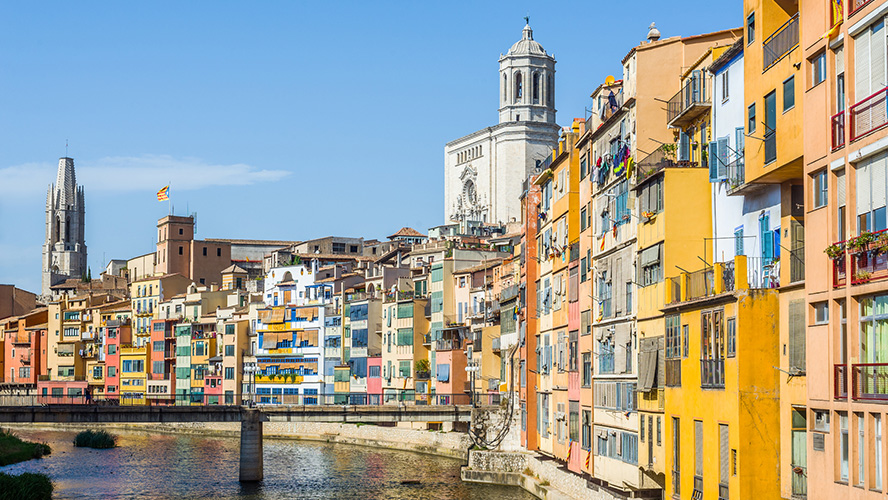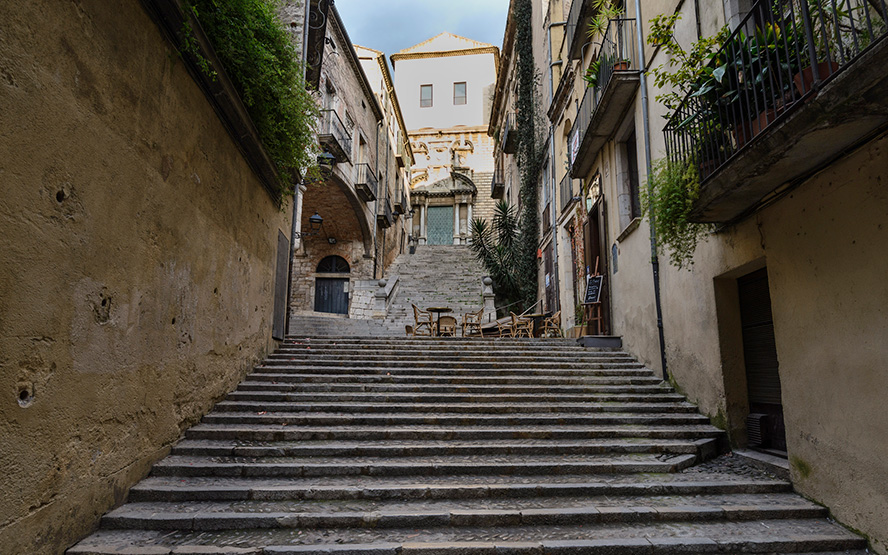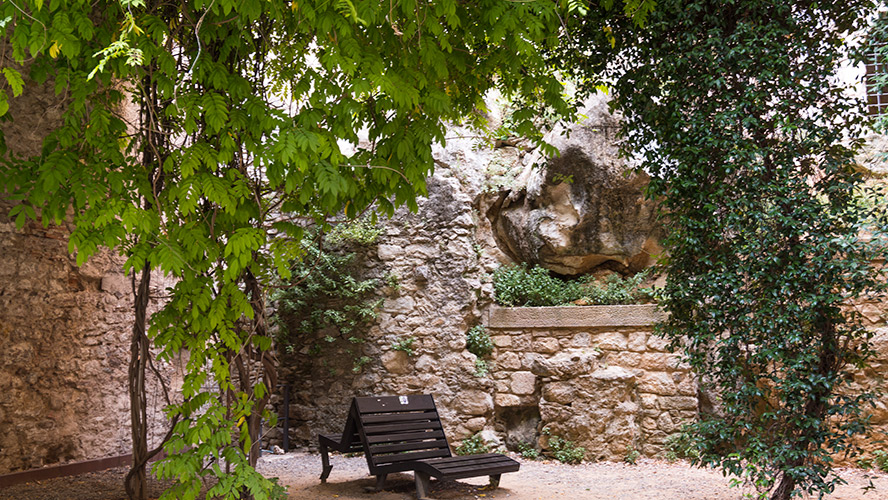Girona’s Jewish quarter (known as a “call” in Catalan) is one of the best preserved of its kind in the Iberian Peninsula and all of Europe. Located in the heart of the city’s old town, it occupies the territory that was once inhabited by the city’s Jewish population, whose activity and influence were once significant. A document dated 888 A.D. suggests that there were around 25 Jewish families living in the area at the time. However, the Jewish quarter didn’t experience its golden age until the period between the 12th and 15th centuries. During this time, the city’s Jewish quarter – located close to Girona Cathedral – was the home of roughly 800 Jews. Today, it is one of Girona’s most iconic districts. One of its ancient synagogues now houses a museum that allows visitors to discover the history of this nomadic population who were expelled from Spain in 1492. It is well worth taking a stroll through the Jewish quarter to learn about its fascinating history and marvel at its architectural styles.
History of Girona’s Jewish quarter a
Although evidence suggests that Girona was home to a small number of Jewish people as far back as the 9th century, its “Call” – or Jewish quarter – didn’t exist until the 12th century. The area around Carrer de la Força was inhabited by the city’s Jewish population until the year 1492 when all of Spain’s Jews were forced to vacate their homes and leave the country. The same thing happened in Jewish quarters all across Spain, including the Call de Barcelona.
During their period of maximum splendour, Girona’s Jewish community aroused the suspicion of the local Christian population who were uncomfortable with their commercial successes and intellectual activities. In the year 1207, they started to bury their dead in a large area of unspoiled land which would go on to become the city’s Jewish cemetery. They also owned properties in Carrer Ballesteries, in the Mercadal neighbourhood and in a pseudo-industrial area of the city where they had rights to several mills

What to see in Girona’s Jewish quarter
Standing on the banks of the River Onyar, Girona’s Jewish quarter is one of the most photographed areas in the city. As visitors stroll along its narrow streets, they are taken on a journey back to the Middle Ages. We recommend taking a leisurely stroll through this historic district and admiring its irregular weave of narrow stone streets, houses, stairways, arches and unique courtyards. We also suggest stopping at one of the neighbourhood’s most unique buildings, the Centre Bonastruc ça Porta, which houses the Museum of Jewish History and the Nahmanides Institute for Jewish Studies.
You can also admire the Jewish quarter from La Devesa Park, which offers a wonderful panoramic view of this historic area of Girona.

Museum of Jewish History
This museum, which is located between Calle de la Força and Calle de Sant Llorenç, is housed within an old synagogue that was used as a place of worship until 1492. It provides a fascinating insight into the history, culture, gastronomy, customs and trades of the Jewish community. The floor of the museum’s courtyard bears a huge Star of David, while the museum itself displays the largest Hebrew lapidary collection in all of Spain.
The Museum of Jewish History, also referred to as the MUHBA del Call, has been operating since 2015. It is open from 10 a.m. to 6 p.m. from Monday to Saturday and from 10 a.m. to 2 p.m. on Sundays and public holidays. General admission tickets cost 2 euros, which includes the use of an audio guide.
Where to eat in Girona’s Jewish quarter
The city’s Jewish quarter is home to several excellent and highly regarded restaurants that are a wonderful way to sample local delicacies. One of the most famous restaurants is El Pou del Call, which serves Mediterranean cuisine crafted with high-quality seasonal produce. The restaurant’s cod croquettes, free-range chicken with cuttlefish and roast beef cannelloni are some of its most popular dishes. It also has a reasonably-priced lunchtime set menu. Other popular restaurants include La Ferla, D’aqui, La Bombonera, Arròs 9 By Terram, El Pati de la Veina, L’Estrella del Mar, Vintages and Casa Marieta.

Where to stay in Girona
If you’re looking to learn all about Girona’s unique heritage but want to stay in a beach holiday resort, we highly recommend the new beachfront Hotel Roses Platja which offers direct access to the water. It also has an outdoor swimming pool, which can be covered or uncovered depending on the season. Guests who stay at this charming colonial-style hotel can enjoy a wide range of impressive services as well as a diverse culinary offer at its buffet restaurant and snack bar. Put simply, it is the perfect place to spend a few days with your family, friends or partner. Its 167 rooms, each with its own private terrace, also enjoy magnificent views out to sea.










































































